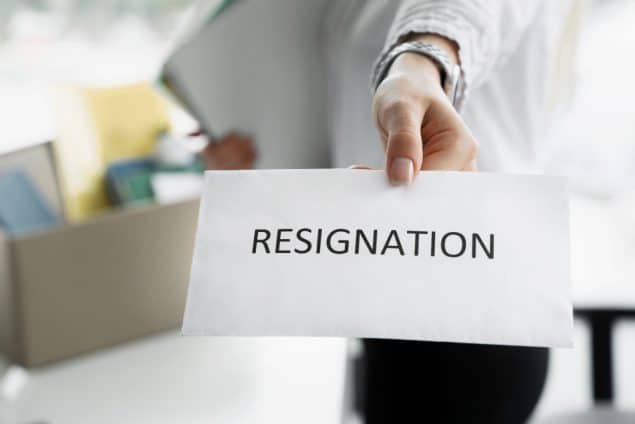Home » UK Employment news • US Employment News » How to write a professional resignation letter
How to write a professional resignation letter
https://www.whatjobs.com/news/united-kingdom/uk-employment-news/how-to-write-a-professional-resignation-letter

By Kris Paterson in UK Employment news, posted February 21, 2023

Resigning from a job can be difficult, but when it's time to move on, it's essential to do so professionally and respectfully.
One of the most crucial steps in leaving a job is writing a resignation letter.
In this guide, we'll walk you through the steps to write a resignation letter that is clear, concise, and professional.
READ MORE: How to Write a Standout Cover Letter: Tips and Techniques for Job Seekers
Begin with a formal greeting
Start your resignation letter with a formal greeting, such as "Dear [Manager's Name]." This sets the tone for a professional and respectful letter.
If you're unsure of who to address the letter to, check your employee handbook or ask a colleague or HR representative.
State your intention to resign
In the first paragraph, state your intention to resign and include the date of your last day of work.
This is essential information for your employer to have in order to make arrangements for your departure.
Express gratitude
In the next paragraph, express your appreciation for the opportunities and experiences you had while working for the company.
This shows that you're leaving on good terms and appreciate your time with the company.
Provide a reason (optional)
You don't necessarily need to provide a basis for your resignation, but keep it brief and professional if you choose to.
This can provide context for your departure and show it's unrelated to negative experiences.
It's not a good idea to provide a long list of reasons why you don't like the job or the company.
Offer to help with the transition
In the final paragraph, offer to help with the change, such as training a replacement or completing any outstanding tasks. This shows that you're willing to help make the process as smooth as possible and care about the company's future success.
Close with a formal sign-off
Close your resignation letter with a formal sign-off, such as "Sincerely" or "Best regards," followed by your name and contact information. This provides a clear and professional ending to the letter.
READ MORE: Need a cover letter for a potential interview?
Template of a Resignation Letter
[Your Name]
[Your Address]
[City, State ZIP Code/Post code]
[Date]
[Manager's Name]
[Company Name]
[Address]
[City, State ZIP Code/Post code]
Dear [Manager's Name],
I am writing to inform you that I am resigning from my position as [Job Title] at [Company Name]. My last day of work will be on the [Date].
I have enjoyed my time at [Company Name] and am grateful for the opportunities and experiences I have had while working here. I am proud of the work that we have accomplished together and am confident that the company will continue to thrive in the future.
I have accepted a new position that aligns with my career goals and provides me with new challenges and opportunities. I am excited about this next chapter in my career, but I will miss my colleagues and the work we have done together.
I am committed to making the transition as smooth as possible and will do everything I can to ensure that my work is completed and my responsibilities are passed on to another team member. Please let me know if there is anything else I can do to help with the transition.
Thank you for the support and guidance you have provided me during my time at [Company Name]. I am grateful for the experiences and knowledge I have gained here and will always fondly remember my time with the company.
Sincerely,
[Your Name]
In summary
Writing a resignation letter can be challenging, but it's an integral part of resigning from a job.
By following these steps, you can write a resignation letter that is professional, respectful, and clear. Remember that how you resign can impact your reputation, so take the time to write a thoughtful and well-crafted letter.
Follow us on YouTube,Twitter,LinkedIn, and Facebook











